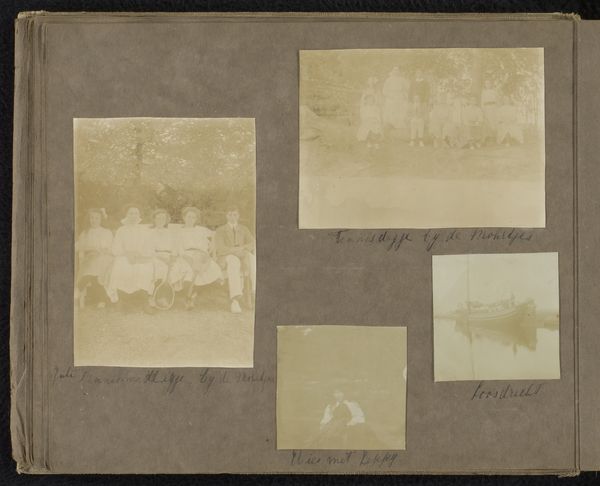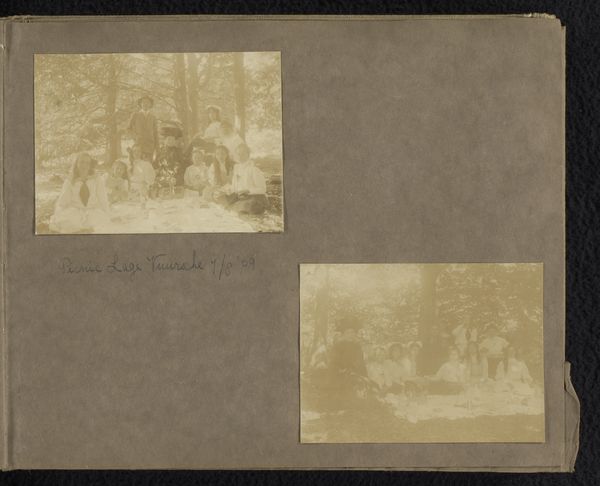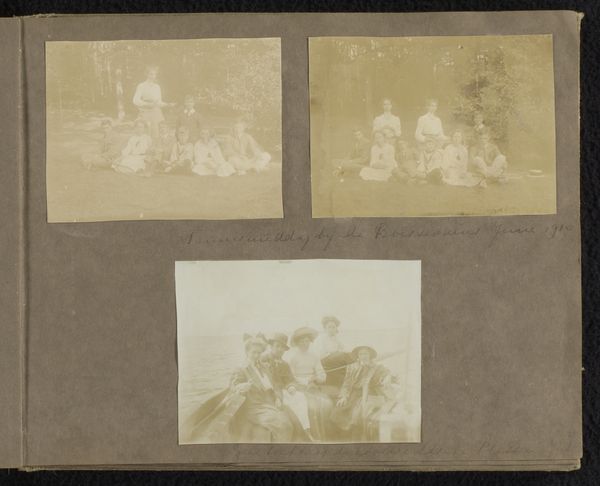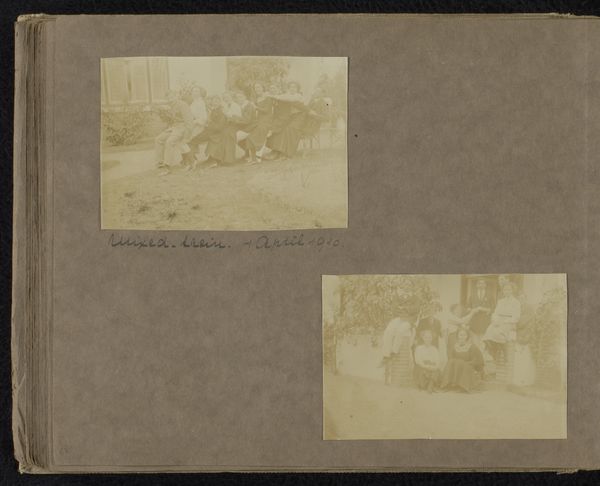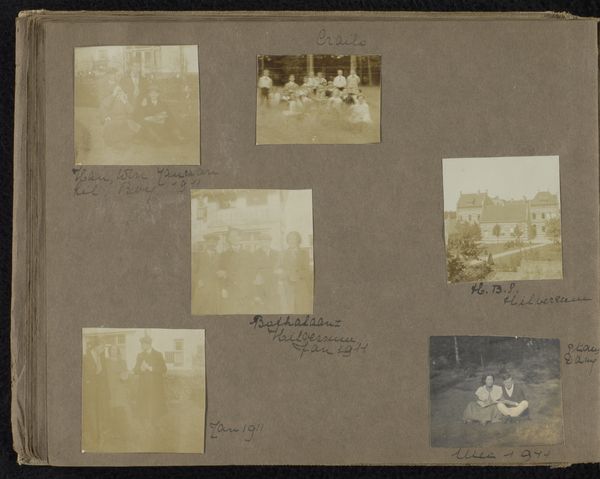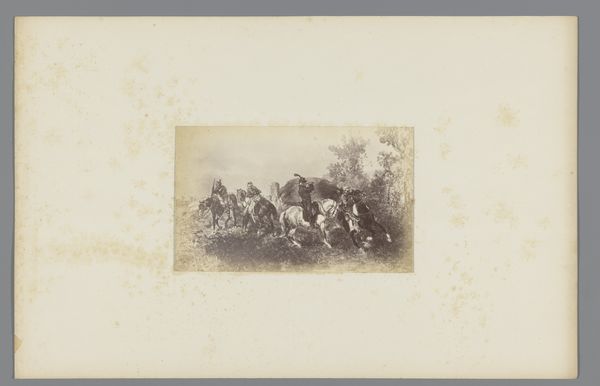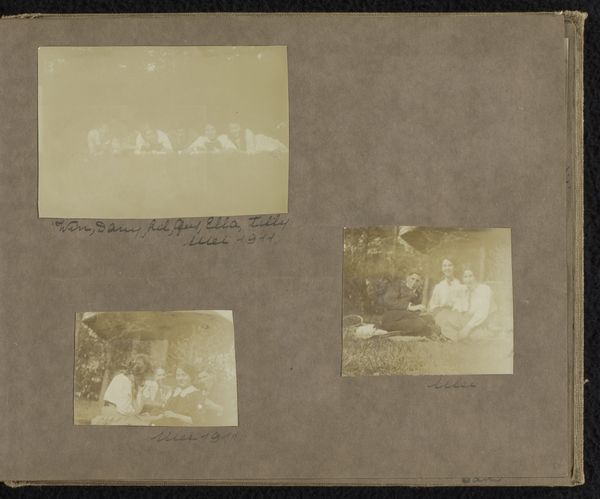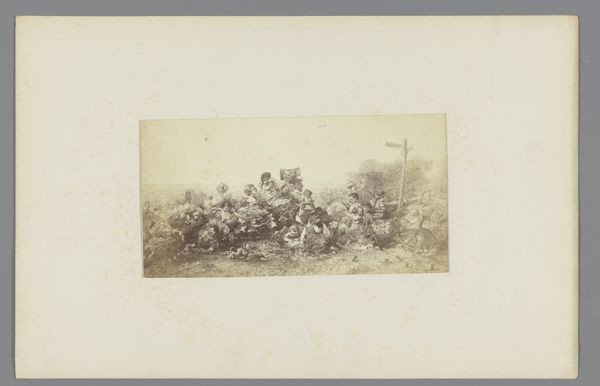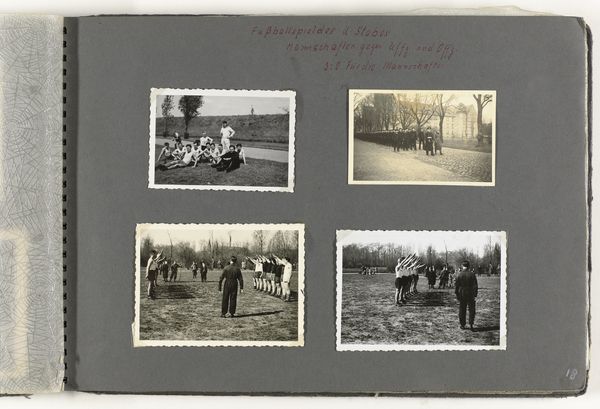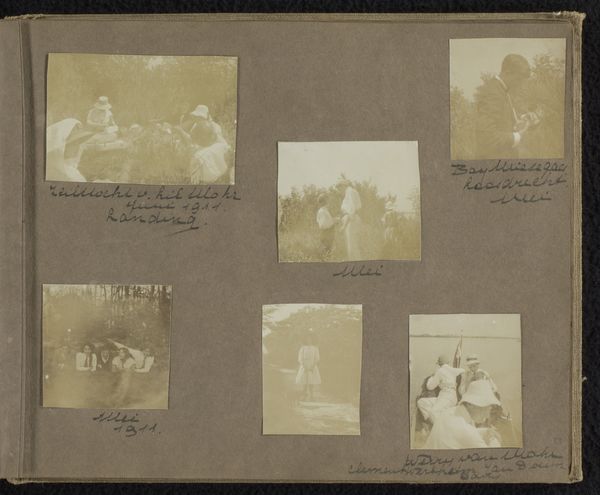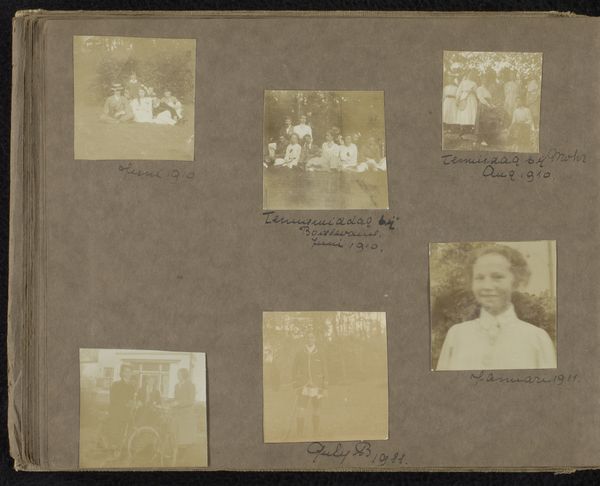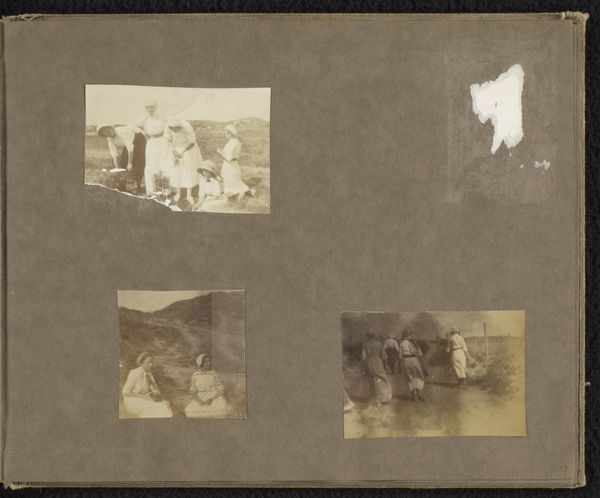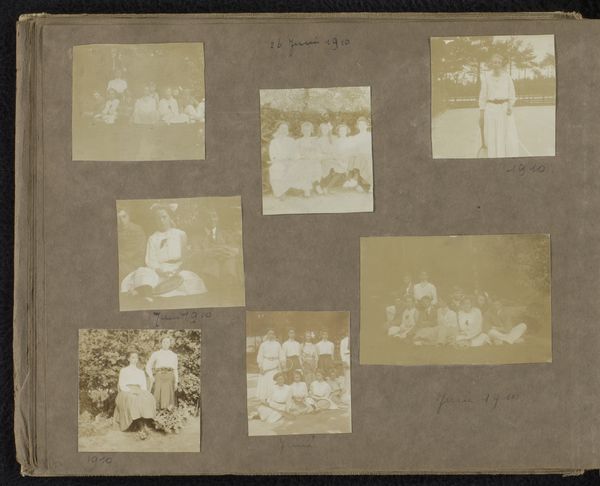
photography, gelatin-silver-print
#
portrait
#
dutch-golden-age
#
photography
#
group-portraits
#
gelatin-silver-print
#
history-painting
#
realism
Dimensions: height 203 mm, width 253 mm
Copyright: Rijks Museum: Open Domain
Curator: These evocative vintage photographs, titled "Twee groepsportretten van hockeyteams, Hilversum," were taken sometime between 1910 and 1911 by Carolina (Loentje) Frederika Onnen. They appear to be gelatin silver prints mounted in an album. What strikes you initially about these images? Editor: Immediately, the sepia tone gives these portraits a somber, almost ghostly atmosphere. It's the texture that grabs me, too—the tangible feel of the gelatin silver process, and the sense of the image slowly fading from the paper itself. The process must have been meticulous. Curator: Indeed. Beyond the process, observe how carefully arranged each group portrait is. Notice the symbolic weight of their posture: erect, athletic, determined. One senses the cultural values projected upon them—strength, discipline, teamwork. This connects them to archetypes of heroic figures in Dutch history. Editor: You’re right; there’s a real social structuring evident here. But for me, thinking about how those images were physically developed is key. Gelatin silver requires a darkroom, chemicals, specific papers, and skilled labor. These images speak to a culture of material practices and the economics surrounding early photography. The crisp detail that this particular chemical process made possible speaks of control and standardization, a different value altogether. Curator: But the act of creating such a permanent image of these teams underscores the value of communal identity at that time. Each face tells a story, and we can ponder the historical continuities these portraits hold as a sign of enduring social structures. Sport acts as a ritualistic bonding exercise across generations. Editor: Agreed, but it also acted as labor and material culture! From the clothing of the players and photographer, the development chemicals, the very idea of leisure. Even the hockey sticks are produced—perhaps by the players themselves or by a workshop somewhere! It brings together disparate lives through objects and manufacturing. These images weren’t suspended in timeless social unity. The materiality is central to how we access history, after all. Curator: Ultimately, perhaps the true art lies in their remarkable survival. How fortunate that such fleeting moments were captured, allowing us to appreciate the visual codes of a long-ago community today! Editor: For me, this artwork’s charm really comes from revealing so clearly just how art is always made and enmeshed with our tangible lives.
Comments
No comments
Be the first to comment and join the conversation on the ultimate creative platform.
